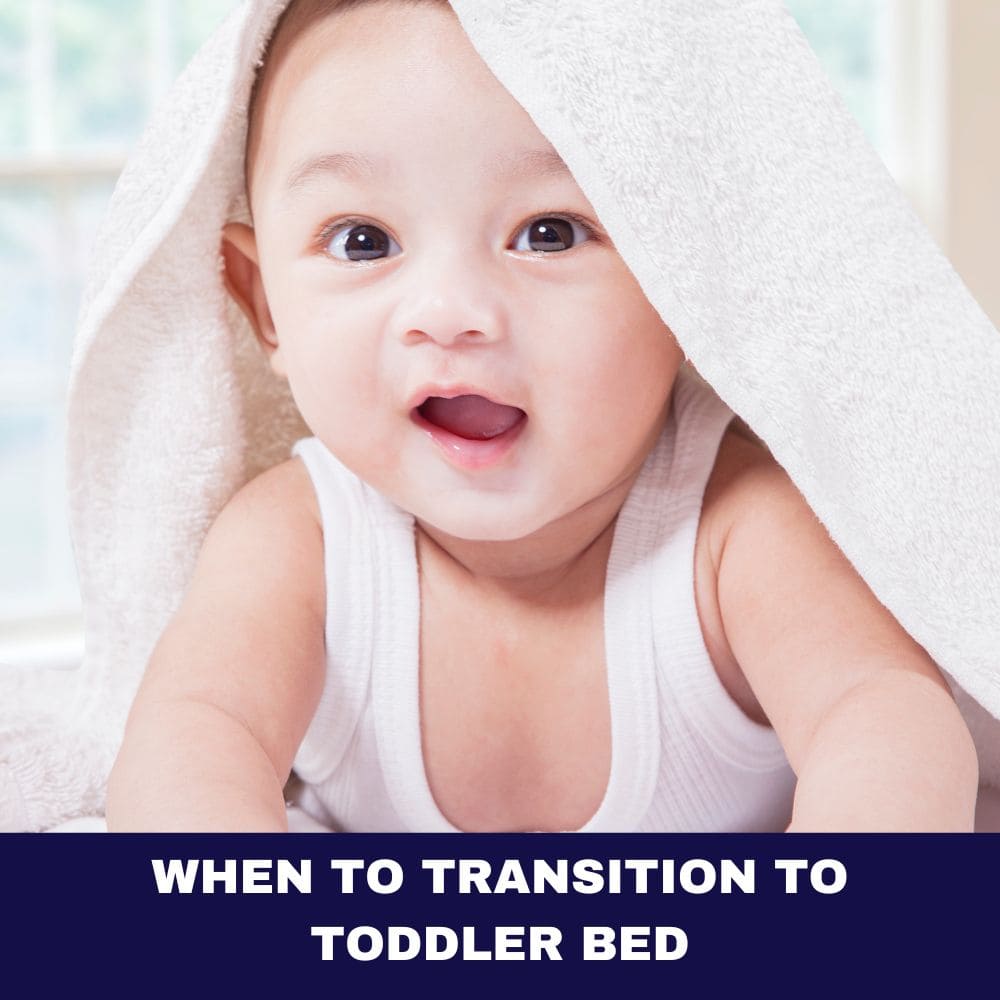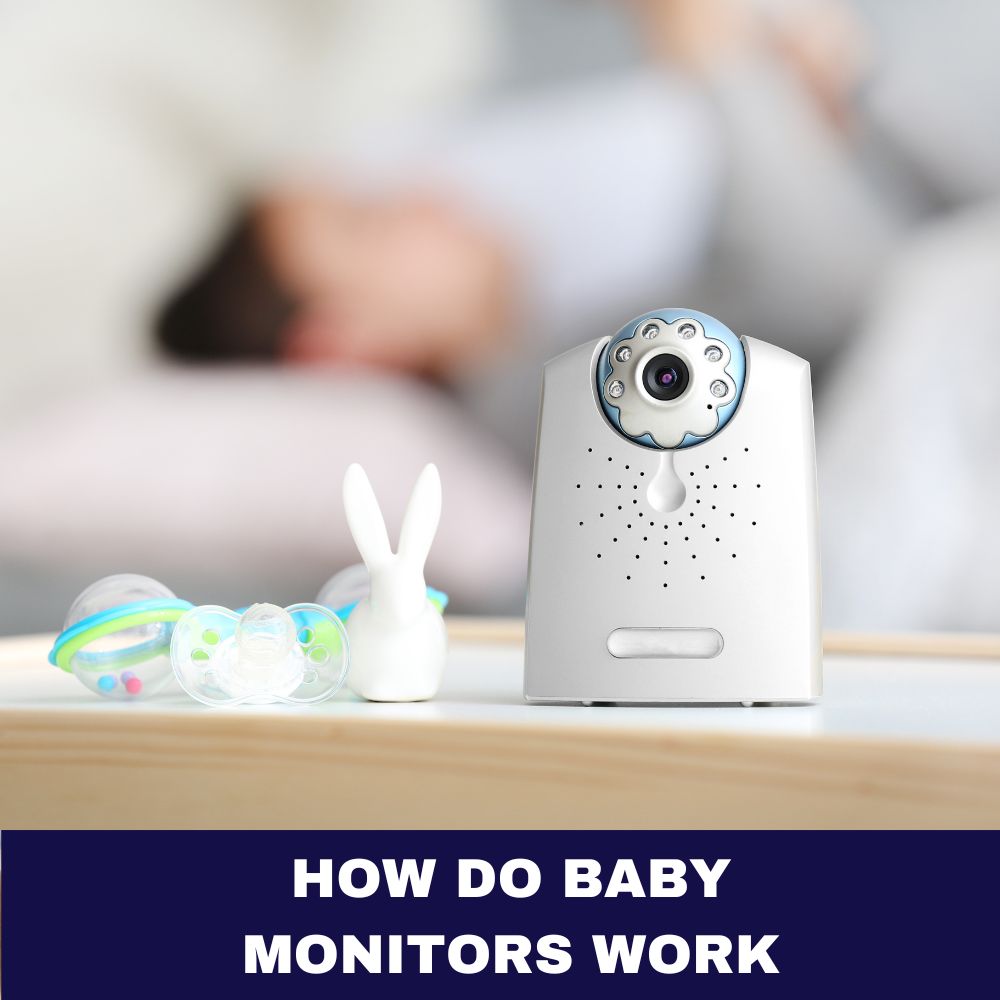As a new parent, getting your newborn to sleep can feel like an endless struggle. You’ve tried everything, from rocking them gently to singing lullabies, but nothing seems to work. That’s where a bassinet comes in handy. But even with this cozy little bed, you may still find yourself wondering, “How do I get my newborn to sleep in the bassinet?”
Establishing healthy sleep habits early on is crucial for your baby’s development and your own well-being. A good night’s sleep (or at least a few hours of uninterrupted rest) can make a world of difference for both you and your little one. That’s why it’s so important to find ways to help your newborn sleep comfortably and safely in their bassinet.
Not only does a bassinet provide a cozy and familiar environment for your baby, but it also promotes safe sleep practices recommended by the American Academy of Pediatrics (AAP). By sleeping in a bassinet, your newborn is less likely to experience Sudden Infant Death Syndrome (SIDS) or accidental suffocation. Plus, having your baby sleep in a bassinet near your bed (room-sharing) allows you to respond quickly to their needs without the risks associated with bed-sharing.
So, let’s dive into the world of peaceful newborn sleep and explore seven strategies to help your little one catch those zzz’s in their bassinet.

Understanding Your Newborn’s Sleep Patterns and Needs
Before we dive into the strategies, it’s essential to understand your newborn’s sleep patterns and needs. Newborns have different sleep cycles than adults, and they tend to sleep for shorter periods throughout the day and night. This is perfectly normal and is a part of their developmental process.
During their first few months, newborns alternate between periods of active sleep (also known as REM sleep) and quiet sleep. Active sleep is when you’ll see your baby’s eyes moving rapidly beneath their closed lids, and their little bodies may twitch or make sucking motions. Quiet sleep, on the other hand, is a deeper, more restful sleep stage.
Establishing a consistent sleep routine is crucial for helping your newborn understand the difference between day and night, and for promoting longer stretches of sleep. A good sleep routine can also help your baby feel more secure and calm, making it easier for them to fall asleep and stay asleep.
Additionally, it’s important to remember that newborns have a strong desire for physical closeness and may struggle with the transition to sleeping in a separate space like a bassinet. This is completely normal and a part of their need for security and comfort.
Next-step advice: Start observing your newborn’s sleep patterns and cues. Pay attention to when they seem tired or overstimulated, and try to respond to their needs promptly. This will help you establish a routine that works best for your baby.
| Sleep Stage | Description | Duration |
|---|---|---|
| Active Sleep (REM) | Baby’s eyes move rapidly, body twitches, breathing is irregular | 20-50 minutes |
| Quiet Sleep (Non-REM) | Deep, restful sleep, regular breathing | 20-40 minutes |
Reasons Why Newborns Won’t Sleep in a Bassinet
Despite your best efforts, there may be times when your newborn just doesn’t seem to want to sleep in their bassinet. Here are some common reasons why this might happen:
- Lack of comfort: Newborns are used to the cozy and confined space of the womb, so the bassinet may feel too open or unfamiliar at first.
- Gas or reflux issues: If your baby is experiencing discomfort from gas or reflux, it can make it difficult for them to settle down and sleep comfortably.
- Overtiredness: Believe it or not, overtired babies often have a harder time falling and staying asleep. It’s important to watch for their sleepy cues and put them down before they become overtired.
- Startle reflex: Newborns have a strong startle reflex, which can cause them to wake up suddenly and unexpectedly. This reflex can be triggered by loud noises or sudden movements.
- Need for security: As mentioned earlier, newborns have a strong need for physical closeness and security. Being separated from you in a bassinet can be unsettling for them.
While these reasons can make it challenging to get your newborn to sleep in their bassinet, it’s important to remember that with patience, consistency, and the right strategies, you can help them learn to love their cozy little bed.
Next-step advice: Try to identify the specific reasons why your newborn may be struggling with the bassinet. This will help you choose the most effective strategies to address their needs.
Creating a Soothing Sleep Environment
One of the key factors in helping your newborn sleep well in their bassinet is creating a soothing sleep environment. A calm and comfortable space can go a long way in promoting better sleep for your little one. Here are some tips for setting up the perfect sleep sanctuary:
- Temperature control: Newborns sleep best in a room that’s slightly cooler than what’s comfortable for adults, around 68-72°F (20-22°C). Use a room thermometer to monitor the temperature and adjust as needed.
- Lighting: Dim or soft lighting can help cue your baby that it’s time for sleep. Consider using blackout curtains or a night light with a warm, gentle glow.
- Sound control: While some babies sleep better with white noise or soothing music, others may prefer a quieter environment. Experiment to see what works best for your little one.
- Crib or bassinet setup: Keep the bassinet simple and free of loose bedding, pillows, or toys that could pose a suffocation risk. Use a firm, flat mattress and a tight-fitting sheet.
- Aromatherapy (optional): Some parents find that using calming essential oils like lavender or chamomile can help create a relaxing atmosphere. However, be sure to use them safely and sparingly.
By creating a soothing sleep environment, you’re not only promoting better sleep for your newborn but also setting the stage for healthy sleep habits that can last well into childhood.
Next-step advice: Take some time to assess your newborn’s sleep environment and make any necessary adjustments to create a calm and comfortable space.
The Bassinet: A Safe and Cozy Sleep Space
While there are many benefits to having your newborn sleep in a bassinet, safety should always be the top priority. The American Academy of Pediatrics (AAP) recommends that babies sleep on their backs, on a firm, flat surface, without any loose bedding or soft objects in their sleep area.
A bassinet is designed to meet these safety guidelines, providing a cozy and secure space for your newborn to sleep. Here are some key advantages of using a bassinet:
- Reduced risk of SIDS: Bassinets are designed to be breathable and free of loose bedding or soft objects that could increase the risk of Sudden Infant Death Syndrome (SIDS).
- Convenient and portable: Most bassinets are lightweight and easy to move from room to room, allowing you to keep your baby close by at all times.
- Familiar and soothing: Bassinets provide a cozy and familiar environment for your newborn, which can help them feel more secure and comfortable when it’s time to sleep.
- Promotes room-sharing: By having your baby sleep in a bassinet near your bed, you’re following the AAP’s recommendation for room-sharing, which has been shown to reduce the risk of SIDS.
When choosing a bassinet, be sure to check the weight and height limits, as most are only designed for use until your baby starts rolling over or reaches a certain weight (typically around 15-20 pounds). Additionally, consider removing any fancy bassinet inserts or plush fabrics, as these can increase the risk of suffocation or overheating.
Next-step advice: If you haven’t already, invest in a safe and sturdy bassinet that meets current safety standards. Make sure to follow all instructions for proper assembly and use.

Strategy 1: Establish a Bedtime Routine
One of the most effective ways to help your newborn sleep better in their bassinet is to establish a consistent bedtime routine. Routines provide structure and predictability, which can be incredibly soothing for babies.
Here are some tips for creating a bedtime routine that works for your family:
- Start the routine 30-60 minutes before bedtime: This gives your baby time to wind down and prepare for sleep.
- Include calming activities: A warm bath, gentle massage, reading a book, or singing lullabies can all be part of the routine.
- Keep it consistent: Try to follow the same order of activities each night and involve both parents (if possible) to reinforce the routine.
- Create a sleep cue: Use a specific cue, like turning on a white noise machine or dimming the lights, to signal that it’s time to sleep.
- End the routine in the bassinet: After the last part of the routine (e.g., a lullaby or bedtime story), place your drowsy but awake baby in their bassinet to help them learn to fall asleep independently.
Consistency is key when it comes to bedtime routines. It may take a few weeks for your newborn to adjust, but stick with it, and you’ll start to see the benefits of a predictable sleep schedule.
Next-step advice: Sit down with your partner (if applicable) and plan out a bedtime routine that works for your family. Be sure to involve any other caregivers, so everyone is on the same page.
| Activity | Time | Description |
|---|---|---|
| Bath | 6:30 PM | Gentle, warm bath with calming scents |
| Massage | 6:45 PM | Full-body massage with baby-safe oil |
| Lullabies | 7:00 PM | Sing or play soothing lullabies |
| Story | 7:10 PM | Read a short bedtime story |
| Bassinet | 7:20 PM | Place baby in bassinet, drowsy but awake |
Strategy 2: Swaddle Your Newborn
Swaddling can be a game-changer when it comes to helping your newborn sleep in their bassinet. This age-old technique mimics the cozy and secure feeling of the womb, which can be incredibly soothing for babies.
Here’s how to swaddle your newborn safely and effectively:
- Use a thin, breathable blanket: Muslin or cotton swaddle blankets are ideal for swaddling.
- Lay the blanket out in a diamond shape: Place your baby face-up on the blanket, with their shoulders along the top edge.
- Wrap one side of the blanket across their body: Tuck it under their back and pull it snugly across their chest.
- Wrap the bottom corner up and over their feet: This will help prevent their legs from flailing and startling them awake.
- Wrap the remaining side across their body: Make sure the swaddle is snug but not too tight, allowing for hip and chest movement.
It’s important to stop swaddling once your baby starts attempting to roll over, typically around 2-3 months of age. At this point, you can transition to a sleep sack or wearable blanket to provide a similar sense of security.
Next-step advice: If you haven’t already, stock up on a few swaddle blankets and practice the swaddling technique. It may take a few tries to get it just right, but the payoff of a peacefully sleeping newborn is well worth it.
| Check | Item |
|---|---|
| ✓ | Use a thin, breathable blanket |
| ✓ | Leave room for hip and chest movement |
| ✓ | Stop swaddling once baby shows signs of rolling over |
| ✓ | Ensure swaddle is snug but not too tight |
| ✓ | Check for overheating signs (sweating, flushed skin) |
Strategy 3: Use White Noise and Soothing Sounds
For many newborns, the constant noise and activity of the outside world can be overwhelming and disruptive to their sleep. That’s where white noise and other soothing sounds can be incredibly helpful.
White noise, which is a constant, gentle background sound, can help mask sudden noises that might startle your baby awake. It also mimics the familiar and comforting sounds your baby heard in the womb, which can be incredibly soothing.
Here are some options for incorporating white noise or soothing sounds into your newborn’s sleep routine:
- White noise machine: These devices are specifically designed to produce a consistent, shushing sound that can help calm and soothe babies.
- White noise app: If you prefer a more portable option, there are many white noise apps available for your smartphone or tablet.
- Fan or air purifier: The gentle humming sound of a fan or air purifier can also provide a soothing white noise effect.
- Nature sounds: Some babies respond well to the calming sounds of nature, like rain, ocean waves, or a gentle breeze.
- Lullabies or soft music: Playing soft, instrumental lullabies or classical music can also help create a peaceful sleep environment.
It’s important to keep the volume at a moderate level and to gradually fade out the sound once your baby is asleep. This will help them learn to self-soothe and avoid becoming dependent on the noise for sleep.
Next-step advice: Experiment with different white noise or soothing sound options to see what works best for your newborn. You may need to try a few before finding the perfect sleep-inducing sound.
| Option | Description | Pros | Cons |
|---|---|---|---|
| White Noise Machine | Dedicated device for producing consistent shushing sound | Adjustable volume, portable | Cost, limited sound options |
| White Noise App | Smartphone/tablet app with various white noise sounds | Variety of sounds, portable | Drains battery, requires device |
| Fan/Air Purifier | Household appliances that generate gentle humming noise | Free, multi-purpose | Limited sound options, potential noise disturbance |
| Nature Sounds | Recordings of rainfall, ocean waves, or other natural sounds | Soothing, variety of options | May need to purchase or stream |
Strategy 4: Try Different Soothing Techniques
Every baby is different, and what works for one may not work for another. That’s why it’s important to have a variety of soothing techniques in your arsenal when it comes to helping your newborn sleep in their bassinet.
Here are some tried-and-true methods to consider:
- Gentle rocking or bouncing: The rhythmic motion can be incredibly calming for babies and may help them transition from being awake to falling asleep.
- Baby wearing: Keeping your newborn close in a soft carrier or wrap can provide a sense of security and comfort, making it easier for them to relax and drift off.
- Pacifiers: For some babies, the act of sucking on a pacifier can be incredibly soothing and may help them fall asleep more easily.
- Massage: A gentle massage with some baby-safe lotion or oil can not only help your baby relax but also promote bonding and physical closeness.
- Shushing or humming: The soft, repetitive sound of shushing or humming can mimic the familiar noises of the womb and may help calm your newborn.
Remember, it’s all about finding what works best for your baby. Don’t be afraid to experiment and try different techniques until you find the right combination that helps your little one drift off to dreamland.
Next-step advice: Make a list of the different soothing techniques you’d like to try and start incorporating them into your newborn’s bedtime routine. Be patient and persistent, and don’t get discouraged if it takes some time to find the right approach.
Strategy 5: Practice Responsive Settling
As your newborn grows and develops, it’s important to help them learn how to self-soothe and fall asleep independently in their bassinet. This is where responsive settling comes into play.
Responsive settling is a gentle approach that involves responding to your baby’s cues and gradually helping them learn to self-soothe and transition into sleep on their own. Here are some tips for practicing responsive settling:
- Watch for sleepy cues: Before your baby becomes overtired, look for signs that they’re ready for sleep, such as rubbing their eyes, yawning, or becoming fussy.
- Use soothing techniques: Once you’ve identified sleepy cues, try rocking, singing, or using other soothing techniques to help your baby start to wind down.
- Place them in the bassinet drowsy but awake: When your baby is drowsy but still awake, gently place them in their bassinet. This allows them to practice falling asleep on their own.
- Respond to cues: If your baby becomes distressed or starts to cry, respond promptly by picking them up and offering comfort. Once they’ve calmed down, try placing them back in the bassinet and repeating the process.
- Be patient and consistent: Responsive settling can take time and patience, but with consistency, your baby will gradually learn to self-soothe and fall asleep independently.
It’s important to note that responsive settling is not the same as sleep training or cry-it-out methods. The goal is to gently guide your baby towards self-soothing, not to let them cry for extended periods without responding.
Next-step advice: Start incorporating responsive settling techniques into your newborn’s bedtime routine. Be patient and consistent, and remember that every baby is different – some may take longer than others to master the art of self-soothing.
Strategy 6: Optimize Feeding and Burping
A well-fed and properly burped baby is often a happier and more content baby, which can make it easier for them to settle down and sleep in their bassinet. Here are some tips for optimizing feeding and burping:
- Follow hunger cues: Pay attention to your baby’s hunger cues (such as rooting, sucking on their fists, or becoming fussy) and feed them before they become overly hungry or distressed.
- Avoid overfeeding: While it’s important to ensure your baby is getting enough to eat, overfeeding can lead to discomfort and disrupted sleep. Watch for signs that your baby is full, such as turning their head away or falling asleep during a feeding.
- Burp frequently: Trapped gas can cause significant discomfort for your baby, making it difficult for them to sleep. Burp your baby regularly during and after feedings to help release any trapped air.
- Consider Dream Feeds: A “dream feed” is a late-night feeding while your baby is still asleep. This can help top them off before a longer stretch of sleep and may reduce the need for night wakings.

Strategy 7: Encourage Daytime Naps and Drowsy but Awake Method
While it might seem counterintuitive, encouraging plenty of daytime naps can actually help your newborn sleep better at night in their bassinet. Well-rested babies tend to be less overtired and fussy, making it easier for them to settle down and drift off to sleep.
Here are some tips for promoting healthy daytime naps:
- Watch for sleepy cues: Just like at night, pay attention to your baby’s cues that they’re ready for a nap, such as yawning, eye rubbing, or fussiness.
- Create a nap routine: Establish a simple routine for nap time, such as dimming the lights, playing soft music, or reading a short book. This helps cue your baby that it’s time to sleep.
- Use the bassinet for naps: Get your baby used to napping in their bassinet from an early age. This will help them associate the bassinet with sleep.
- Try the “drowsy but awake” method: Similar to bedtime, aim to put your baby down in their bassinet when they’re drowsy but still awake. This helps them practice falling asleep independently.
- Be flexible: Your newborn’s nap schedule may be irregular at first, and that’s okay. Be patient and flexible, and adjust as needed based on their cues and sleep patterns.
In addition to encouraging daytime naps, the “drowsy but awake” method can be a powerful tool for helping your newborn learn to self-soothe and fall asleep independently in their bassinet. By putting them down while they’re still awake (but drowsy), you’re allowing them to practice this important skill.
Next-step advice: Start incorporating daytime naps and the “drowsy but awake” method into your newborn’s routine. Be patient and consistent, and remember that every baby is different – some may take longer than others to master the art of self-soothing.
Personal Experience and Success Story
As a parent, I know firsthand how challenging it can be to get a newborn to sleep in their bassinet. With my first child, JJ, we struggled for weeks to establish a consistent sleep routine and get him to fall asleep (and stay asleep) in his bassinet.
It wasn’t until we implemented some of the strategies I’ve shared here that we started to see progress. By creating a soothing sleep environment, establishing a bedtime routine, and incorporating techniques like swaddling and white noise, we were able to help JJ feel more comfortable and secure in his bassinet.
The real game-changer, however, was persistence and consistency. We stuck with it, even on those tough nights when it felt like nothing was working. Around the 2-3 week mark, JJ started to catch on and would often fall asleep on his own in his bassinet after our bedtime routine.
The sense of relief and accomplishment we felt when he finally started sleeping through the night (or at least for longer stretches) was indescribable. Not only did we all get much-needed rest, but JJ also seemed happier and more content during his awake times.
Looking back, the key to our success was a combination of the techniques we used and our unwavering commitment to helping JJ learn to sleep in his bassinet. It wasn’t always easy, but the payoff was well worth it.
Additional Parenting Tips
Keeping Newborns Occupied During Winter During the colder months, it can be challenging to keep your newborn entertained and stimulated while spending more time indoors. Here are some ideas:
- Set up a sensory play area with different textures, colors, and sounds
- Play baby-friendly music or nature sounds
- Read books and sing nursery rhymes
- Engage in tummy time and gentle baby exercises
- Take your baby for short walks in a baby carrier or stroller (bundled up appropriately)
Birthday Traditions for Babies Born on February 29th For babies born on a Leap Day (February 29th), you can start a fun tradition to celebrate their “actual” birthday every four years. Here are some ideas:
- Have a special “Leapster” birthday cake or cupcakes
- Plan a themed birthday party (e.g., frogs, bunnies, or anything that represents leaping)
- Create a time capsule to open on their next Leap Day birthday
- Take a family photo or video to document each Leap Day celebration
Caution Against Putting Items in Crib or Bassinet It’s important to remember that the bassinet or crib should be a safe, clutter-free environment for your baby to sleep. Avoid placing any loose bedding, toys, or other items in the sleeping area, as these can increase the risk of suffocation or entrapment.
Conclusion
Getting your newborn to sleep in their bassinet can be a challenging but rewarding journey. By implementing the seven peaceful strategies we’ve discussed – establishing a bedtime routine, swaddling, using white noise, trying soothing techniques, practicing responsive settling, optimizing feeding and burping, and encouraging daytime naps and the “drowsy but awake” method – you’ll be well on your way to helping your little one catch those zzz’s in their cozy bassinet.
Remember, every baby is different, and what works for one may not work for another. Be patient, and consistent, and don’t be afraid to experiment until you find the right combination of techniques that helps your newborn feel safe, secure, and comfortable in their bassinet.
Throughout this process, it’s also important to prioritize your own self-care. Caring for a newborn can be physically and emotionally draining, so make sure to ask for help when you need it and take breaks whenever possible.
With time, patience, and the right strategies, you and your newborn will soon be enjoying the benefits of peaceful, restorative sleep in the cozy confines of their bassinet. Sweet dreams, my friends!
FAQ – How to Get Newborn to Sleep in Bassinet
How long can a newborn sleep in a bassinet?
Most experts recommend transitioning your baby from a bassinet to a crib by around 4-6 months of age, or once they start attempting to roll over or pull themselves up. However, some babies may outgrow their bassinet sooner or later than this timeframe, so it’s important to follow your baby’s cues and the manufacturer’s guidelines.
Is it okay to leave my newborn in the bassinet awake?
It’s generally not recommended to leave your newborn alone in their bassinet while they’re fully awake, as they may become distressed or overstimulated. However, it’s perfectly fine (and encouraged) to put them down in their bassinet while they’re drowsy but still awake, as this helps them practice self-soothing and falling asleep independently.
Can I sleep train my newborn?
Most experts advise against formal sleep training methods (such as cry-it-out or controlled crying) until your baby is at least 4-6 months old. However, gentle techniques like responsive settling can be introduced earlier to help your newborn learn to self-soothe and fall asleep independently.
Why does my newborn keep waking up in the bassinet?
There are many potential reasons why your newborn may wake frequently in their bassinet, including hunger, discomfort (from gas, reflux, or a dirty diaper), overstimulation, or simply going through a developmental stage. It’s important to respond to your baby’s cues and try to identify and address the underlying cause.
How can I teach my newborn to self-soothe?
Techniques like responsive settling, the “drowsy but awake” method, and using soothing tools like pacifiers or white noise can all help your newborn learn to self-soothe over time. It’s important to be patient and consistent, as every baby develops at their own pace.












